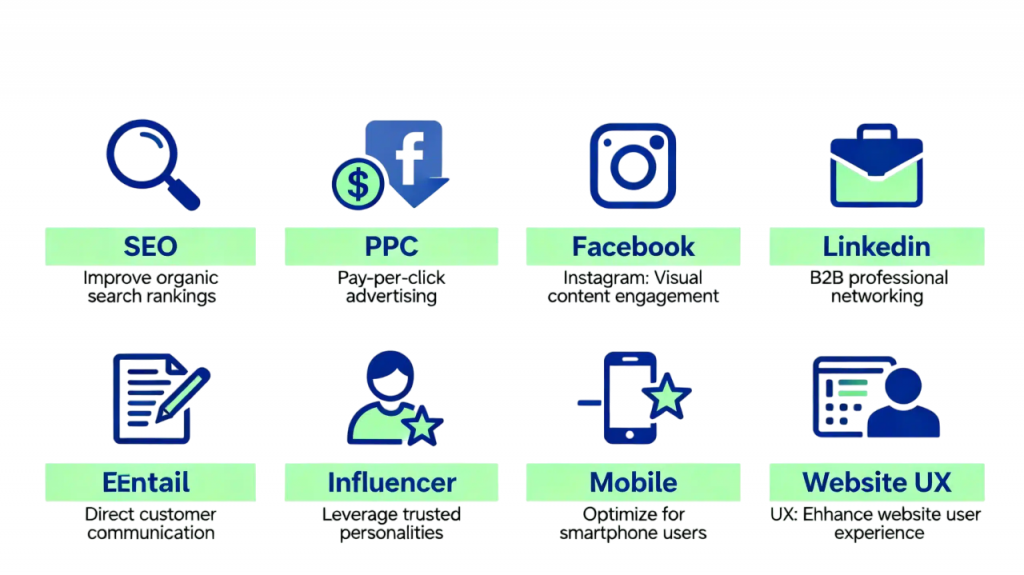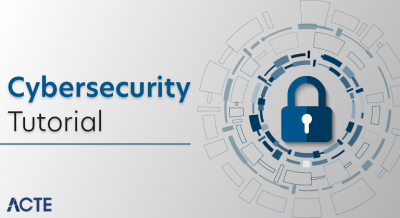
- Definition and Scope
- Evolution of Marketing
- Key Digital Channels
- Content Marketing
- Email Marketing
- Search Engine Optimization
- Paid Advertising (SEM/PPC)
- Social Media Marketing
- Conclusion
Definition and Scope
Digital marketing refers to the use of digital channels, platforms, and technologies to promote products or services to consumers and businesses. Unlike traditional marketing, which relies on offline methods such as print, radio, and television, digital marketing encompasses a range of online tactics that allow for real-time engagement, personalization, and measurable outcomes. Its scope includes everything from search engines and social media to mobile apps and email marketing, making it a critical component for businesses of all sizes. Digital Marketing Training refers to the use of digital channels, technologies, and platforms to promote and advertise products or services to consumers. It involves leveraging the internet and electronic devices such as computers, smartphones, and tablets to reach and engage with target audiences. Unlike traditional marketing, which relies on physical media like newspapers, TV, or billboards, digital marketing uses platforms like websites, search engines, social media, email, and mobile apps to deliver marketing messages and campaigns. The scope of digital marketing is vast and continues to expand with the growth of technology and internet usage. It includes several key areas such as Search Engine Optimization (SEO), which focuses on improving a website’s visibility in search engine results; Search Engine Marketing (SEM), which involves paid advertisements on platforms like Google; and Social Media Marketing, where businesses promote their products and engage with customers on social platforms like Facebook, Instagram, and LinkedIn. Other important components include Content Marketing, which involves creating valuable content to attract and retain audiences; Email Marketing, used for personalized communication and promotions; and Affiliate and Influencer Marketing, Digital Marketing Metrics where third parties help promote a brand for a commission or collaboration. Additionally, Mobile Marketing, Online Public Relations (PR), and Data Analytics are crucial aspects of digital marketing. These tools allow businesses to reach users on mobile devices, manage online reputation, and measure performance through detailed analytics. The importance of digital marketing lies in its ability to reach a global audience, provide measurable results, allow for targeted and personalized campaigns, and enable real-time interaction with customers. With the rapid advancement of digital tools, artificial intelligence, and user behavior, the future scope of digital marketing is bright, making it a vital component of modern business strategies.
Ready to Get Certified in Digital Marketing? Explore the Program Now Digital Marketing Online Training Offered By ACTE Right Now!
Evolution of Marketing
The journey of marketing has evolved dramatically over the years. Initially, marketing was largely limited to word-of-mouth and direct sales. With the advent of mass media in the 20th century, print ads, television commercials, and radio spots became prevalent. However, the digital revolution changed everything. The rise of the internet in the 1990s gave birth to the first websites and email campaigns. This evolution continued with the emergence of search engines, social media platforms, mobile devices, and data analytics, all of which paved the way for today’s sophisticated digital marketing landscape.The evolution of marketing reflects the changing needs, technologies, and behaviors of consumers over time. In its earliest form, marketing was primarily about barter and direct exchange, where goods were traded without a formal system. As economies developed, the production-oriented era emerged during the Industrial Revolution, when companies focused on mass production and distribution, Click-Through Rate in Digital Marketing believing that availability and affordability would drive sales. However, as markets became saturated, the sales-oriented era followed, emphasizing aggressive sales techniques to persuade customers to buy, regardless of their actual needs. With time, businesses began to realize the importance of understanding customer needs, leading to the marketing-oriented era, where consumer satisfaction and market research became central to business strategy. Companies started developing products based on what the customer wanted, not just what they could produce. Eventually, the relationship marketing era evolved, focusing on building long-term relationships with customers rather than just one-time transactions. This approach emphasized customer loyalty, personalized experiences, and after-sale service. Today, we are in the digital and societal marketing era, where technology plays a dominant role. Digital platforms, data analytics, artificial intelligence, and social media have transformed how businesses interact with consumers. Marketing is now more personalized, data-driven, and customer-centric than ever before. Additionally, there is a growing emphasis on ethical marketing, sustainability, and corporate social responsibility. This ongoing evolution highlights how marketing has shifted from product-focused to customer- and society-focused, adapting continuously to new tools, technologies, and expectations.
Key Digital Channels
Digital marketing operates across various channels, each serving specific purposes:
- Search Engines: Both organic search (SEO) and paid search (SEM) help increase visibility on platforms like Google and Bing.
- Social Media: Platforms like Facebook, Instagram, LinkedIn, Twitter, and TikTok Monetized on your YouTube Channel allow brands to engage audiences in real-time.
- Email: A powerful tool for nurturing leads and retaining customers.
- Websites and Blogs: Central hubs for content and user interaction.
- Mobile Apps: Provide direct communication channels and personalized experiences.
- Content marketing is a strategic approach to creating and sharing valuable content to attract and retain a target audience.
- Its main goal is to drive profitable customer action without directly promoting a brand.
- It focuses on delivering information that is helpful, educational, or entertaining to the audience.
- Common types of content include blog posts, videos, infographics, podcasts, and e-books.
- It helps build trust, brand awareness, and long-term customer relationships.
- Content marketing supports SEO by improving website visibility in search engines.
- It generates organic traffic and qualified leads over time Content Management System.
- Content is shared through various channels like websites, social media, emails, and YouTube.
- A successful content marketing strategy includes clear goals and defined target audiences.
- It requires consistent publishing through a planned content calendar.
- Performance is tracked using analytics tools and key performance indicators (KPIs).
- Content must be relevant, high-quality, and optimized for both users and search engines.
- It should align with different stages of the buyer’s journey (awareness, consideration, decision).
- Content marketing is a long-term investment that builds authority and loyalty.
- It is a cost-effective way to engage and convert potential customers.
- Paid advertising involves paying for ads to appear on search engines or other digital platforms.
- SEM stands for Search Engine Marketing, which includes paid ads on search engines like Google and Bing.
- PPC means Pay-Per-Click, where advertisers pay only when someone clicks on their ad.
- Ads are displayed based on keywords that users search for online.
- It allows businesses to target specific audiences based on location, demographics, and Benefits of Digital Marketing interests.
- Paid ads appear at the top or bottom of search engine results pages (SERPs).
- Advertisers set a budget and bid for ad placement through platforms like Google Ads.
- It provides immediate visibility and can drive quick traffic to websites.
- Campaign performance is tracked using metrics like click-through rate (CTR), cost per click (CPC), and return on ad spend (ROAS).
- Paid advertising is highly measurable and allows easy optimization of campaigns in real time.

To Explore Digital Marketing in Depth, Check Out Our Comprehensive Digital Marketing Training To Gain Insights From Our Experts!
Content Marketing
Email Marketing
Email marketing remains one of the most effective digital marketing strategies. It involves sending targeted messages to a list of subscribers with the aim of nurturing leads, promoting products, and maintaining customer relationships. Tools like Mailchimp, ConvertKit, and HubSpot offer automation features that make it easier to segment audiences and Digital Marketing Training deliver personalized content. Key performance indicators (KPIs) include open rates, click-through rates, and conversion rates. Email marketing is a form of digital marketing that involves sending targeted messages to a group of people via email. It is used by businesses to promote products or services, build customer relationships, and drive conversions.

Email marketing can take various forms, such as newsletters, promotional campaigns, product announcements, event invitations, or personalized follow-up emails. One of its key strengths is the ability to reach customers directly in their inbox with tailored content based on their interests, behaviors, or purchase history. It is also highly cost-effective compared to traditional marketing methods and offers measurable results through metrics like open rates, click-through rates, and conversion rates. By using tools like email automation, segmentation, and personalization, marketers can improve engagement and nurture leads over time. When used correctly, email marketing not only increases sales but also strengthens brand loyalty and keeps customers informed and connected with the business.
Looking to Master Digital Marketing? Discover the Digital Marketing Expert Masters Program Training Course Available at ACTE Now!
Search Engine Optimization
SEO is the practice of optimizing web content to improve its ranking on search engine results pages (SERPs). It involves several techniques, including keyword research, on-page optimization, PPC Analyst Salary , backlink building, and technical SEO aspects like improving page speed and mobile usability. The goal is to increase organic traffic and ensure that content is discoverable by users searching for relevant topics. SEO is a long-term strategy that requires ongoing effort and adaptation to changing algorithms.
Paid Advertising (SEM/PPC)
Social Media Marketing
Social media marketing focuses on building brand awareness, engaging with audiences, and driving traffic through social networks. It includes organic posting, paid ads, influencer partnerships, and community management. Each platform has its unique demographics and content styles. For example, LinkedIn is great for B2B marketing, while Instagram and TikTok are ideal for visual storytelling and younger audiences. Consistency, creativity, and data analysis are key to a successful social media strategy.Social media marketing involves using social media platforms like Facebook, Instagram, Twitter, LinkedIn, and TikTok to promote products, services, or brands. It allows businesses to connect directly with their target audience Google’s Match Type Changes , engage with customers, and build brand awareness through organic posts, paid advertisements, and interactive content. By leveraging the unique features of each platform, companies can create personalized campaigns that resonate with different audience segments. Social media marketing helps increase website traffic, generate leads, and foster customer loyalty by encouraging two-way communication and real-time feedback. It also offers detailed analytics to measure the effectiveness of campaigns and understand audience behavior. With the rise of influencers and user-generated content, social media marketing has become a vital tool for brands to expand their reach and build authentic relationships with customers in a cost-effective way.
Preparing for Digital Marketing Job Interviews? Have a Look at Our Blog on Digital Marketing Interview Questions and Answers To Ace Your Interview!
Conclusion
Digital marketing has transformed the way businesses connect with their audiences by leveraging the power of online channels and technology. Its diverse strategies from content marketing and email campaigns to paid advertising and social media allow brands to reach targeted customers more effectively and measure results with precision. As technology continues to evolve, Digital Marketing Training will play an even greater role in shaping consumer behavior and driving business growth. Embracing these digital tools and strategies is essential for businesses to stay competitive, build lasting relationships, and achieve long-term success in today’s fast-paced digital world.




